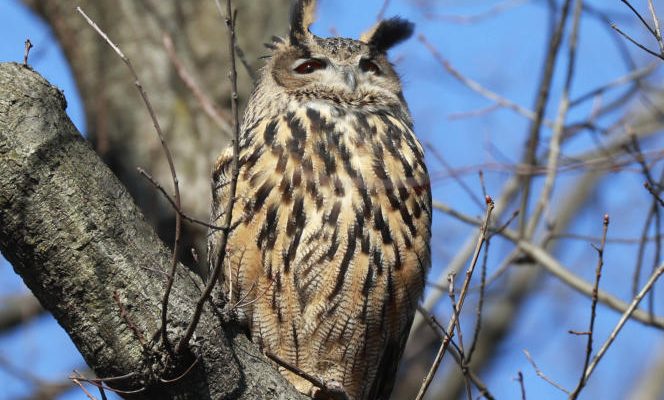He has taken up residence in one of the most bucolic corners of Central Park, at the foot of a stream where a small waterfall flows. On this Easter Sunday, around thirty walkers are massed near the tree where Flaco, a European eagle owl, escaped from the zoo in Manhattan’s famous green lung, is perched. Some are equipped with binoculars, others with telephoto lenses. Ardith Bondi has both. Bob on the head, this septuagenarian is a birdwatching pro. But it’s not his day: the shadow of a branch does not allow him to take the perfect shot. “Why do people come? But because it is magnificent! », she exclaims.
“He became the embodiment of freedom and resilience. He is a source of inspiration for New Yorkers, who respect and admire him for adapting so quickly to his new life. » David Barrett, a passionate
It is true that the animal, of all beauty, is worth the detour. Its eyes are a piercing orange and its fluffy brown plumage, streaked with black, allows it to blend into the landscape. Two
amazing tufts, which look like ears, stick up on its head when it is disturbed. Its aristocratic silhouette is massive: the eagle-owl is one of the largest species of nocturnal birds of prey. Although males, like Flaco, are smaller than females, their wingspan can reach almost 2 meters. On social networks, Internet users compete with photos of the bird in majesty and are passionate about its adventures. There is always one to clarify his last position. The interested party even has a Twitter account which shares the best photos posted by Internet users.
Geraldine getting ready to go out for the night ??️??????✈️ The resident great horned owl of Central Park, 4.10.23… https://t.co/5LFA5w65ZI
A birth in captivity
The story of the raptor is worthy of a Walt Disney script. In February, his enclosure was found empty. A hole large enough for its tenant to squeeze through has been cut in the stainless steel mesh. In its natural habitat, in Europe and Asia, the eagle-owl generally lives far from humans, on cliffs, rocks or in wooded areas. Flaco finds himself free in the heart of a vast megalopolis. Arrived very young, in 2010, at the Central Park Zoo, after a birth in captivity, he never learned to hunt for food and caregivers are worried about his survival. For two weeks, the latter multiply the stratagems to try to recover it, but the animal is deemed difficult to capture. If Flaco is interested in the baits scattered here or there or the recorded cries of his congeners, he does not fall into the trap.
You have 53.83% of this article left to read. The following is for subscribers only.
